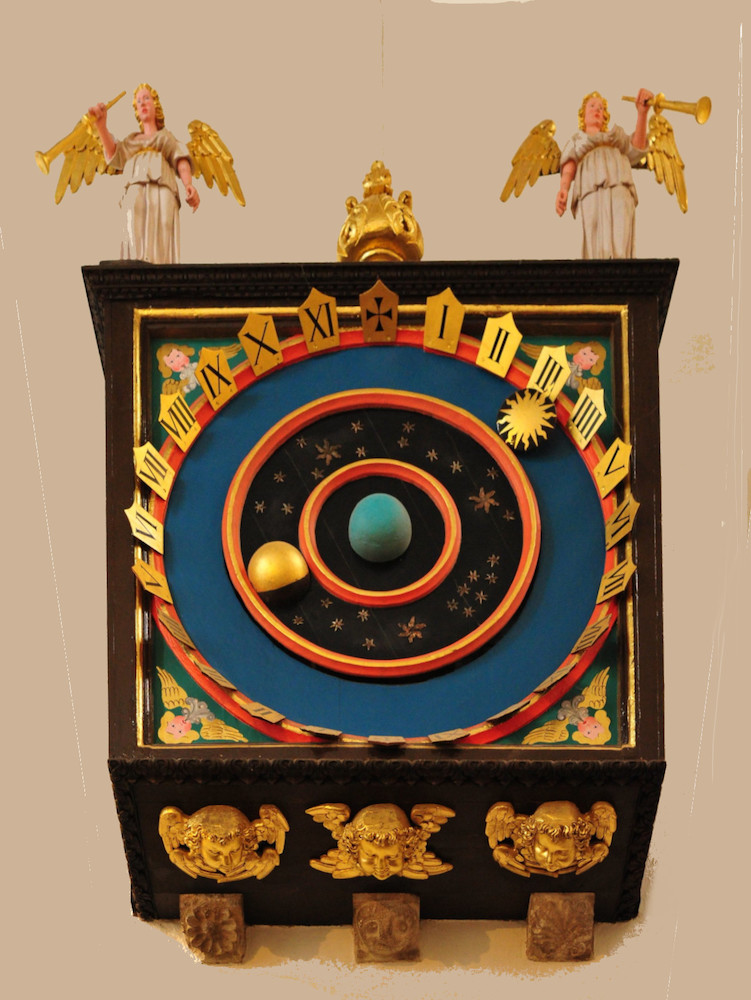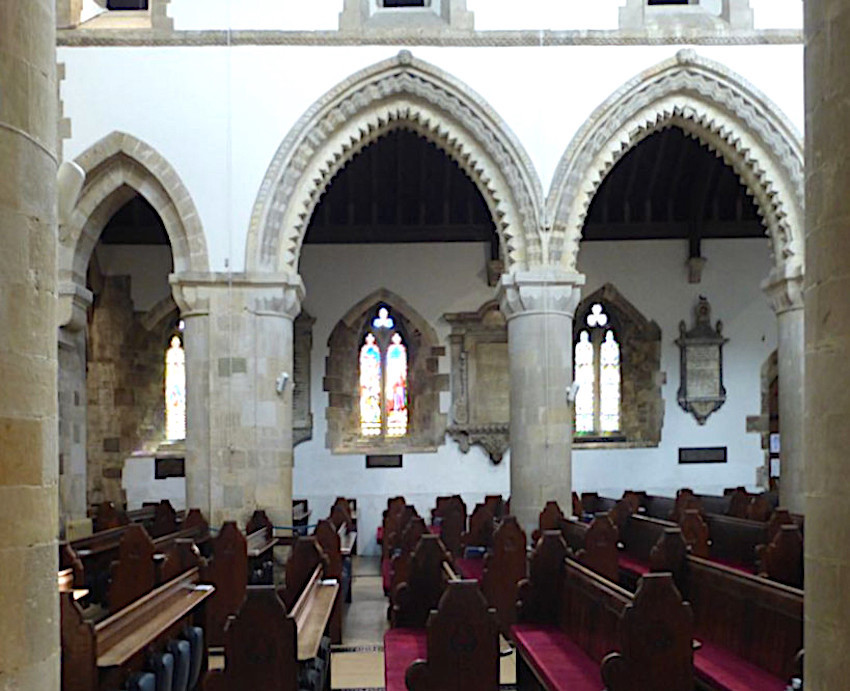
The ancient Minster Church in Wimborne, Dorset, on the west side of the High Street, is an impressive two-towered house of worship with a history going back to Saxon times. Indeed, the Saxon King Ethelred, brother of Alfred, was buried here. It is Grade I listed, and, like most cathedrals and other large churches, is the work of many hands over many centuries.



Left to right: (a) Approaching the Minster. (b) The Jack-o'-clock on the north wall of the western tower (photograph © Michael Day). (c) Looking up into the central tower.
According to the listing text, "the main fabric" dates to the twelfth century and later medieval times. For example, of the two towers, the one at the crossing dates from the twelfth century, while the one at the west end dates from around the mid-fifteenth century. The minster was, however, much restored in the nineteenth century: early in the century the little figure of the Jack-o'-clock on the north side of the western tower was painted up as a grenadier, and the whole of the upper clerestory was rebuilt then, but using the old masonry (see Inventory). This would have been the ideal place for a trainee architect like the young Thomas Hardy to become acquainted with a range of architectural features from different periods, and to practice his draughtsmanship. Hardy remembered his experiences at the Minster in his poem, "Copying Architecture in an Old Minster."



Left to right: (a) Looking west inside the Minster. (b) The astronomical clock in the baptistery (photograph © Lex McKee). (c) Looking across into an aisle.
Among the many features of the ancient Minster, as mentioned in the poem, are (on the exterior) the Jack-o'-clock that strikes the bells every quarter of an hour, and the astronomical clock within. Its position on the wall can be seen in the view looking west, just after the screen, on the left above. Among the most curious monuments is the tomb shown below right, with its noticeably corrected age of death. God or Fate allowed its occupier, the well-born and eccentric Anthony Etricke, one-time Recorder of Poole, more years than he expected, and the discrepancy is still plain for all to see.

Anthony Etricke's tomb. Source: Harper, facing p.270.
Related Material
- The Great West Window (by Heaton & Co.)
- Thomas Hardy's Other Career (as architect: includes the text, and an analysis, of the poem)
Photographs, scanned image, text and formatting by Jacqueline Banerjee, except for the photographs by Michael Day and Lex Mckee, both originally posted on Flickr, and kindly made available on the Attribution 2.0 Generic (CC BY 2.0) License. Thye have been slightly modified here for size and perspective. You may use these images without prior permission for any scholarly or educational purpose as long as you (1) credit the photographer and (2) link your document to this URL in a web project (or to ">Flickr as appropriate), and cite it in a print one. [Click on all the images to enlarge them.]
Bibliography
An Inventory of the Historical Monuments in Dorset. Vol. 5, East. London: Her Majesty's Stationery Office 1975. British History Online. Web. 16 December 2020.
The Minster Church of St Cuthberga. Historic England. Web. 16 December 2020.
Last modified 19 April 2024